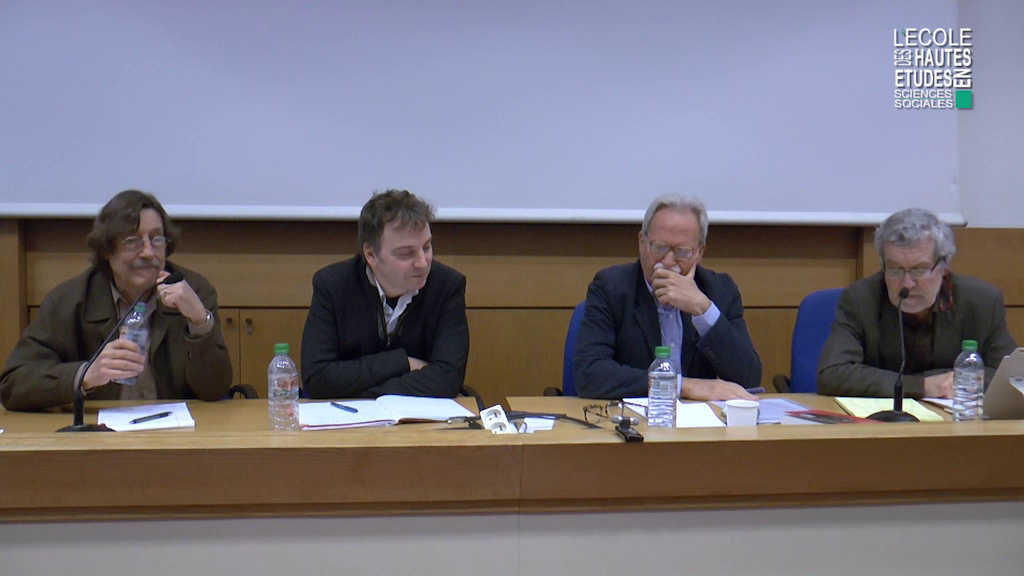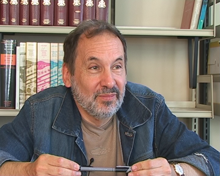Notice
Chris Ballard : Indigenous Oral Traditions and Chronology
- document 1 document 2 document 3
- niveau 1 niveau 2 niveau 3
Descriptif
Chris Ballard : Indigenous Oral Traditions and Chronology
Traditions orales autochtones et chronologie
Quelle profondeur historique peut atteindre l'histoire orale ? A travers le cas d'une pluie de cendres en Papouasie-Nouvelle Guinée (17e siècle), et celui d'une éruption volcanique au Vanuatu (15e siècle), Chris Ballard montre que c'est en tout cas bien davantage que la limite de 150 ans fixée par l'africaniste David Henige. Mais en définitive, au lieu de vérifier que l'histoire orale autochtone est exacte au regard de nos chronologies occidentales, ne devons-nous pas plutôt chercher à la comprendre selon ses propres critères, et saisir ce que ses narrateurs visent à communiquer ?
Indigenous oral traditions and chronology
A persistent problem at the interface of academic history and Indigenous oral traditions is the question of chronology, which many would see as critical to the commensurability of these two broad ways of communicating about the past. Claims that oral traditions accurately encode experiences of cataclysmic events such as sea level rise or volcanic eruptions that date to thousands of years in the past are met with disbelief by academic historians such as Africanist David Henige. Henige has recently argued for a maximum limit of about 150 years for accurate oral transmission of memories of events, prior to their documentation on paper. Two case studies from the Pacific, both relating to volcanic eruptions, provide access to some of the mechanisms which enable long-term transmission by societies with profoundly different historicities, or regimes of historical consciousness. The first considers extant traditions amongst Huli-speakers of central New Guinea, which describe a process of cosmological elaboration following the ash fall from a distant mid- seventeenth century eruption. The second relates to a fifteenth-century eruption in central Vanuatu, charting both the causes and consequences of the destruction of the island of Kuwae and the subsequent resettlement of its remnants. Both traditions date well prior to Henige’s chronological limit, and both have been recorded almost continuously since first contact with outsiders. Instead of testing such traditions for their accuracy, viewed uniquely from the perspectives of a universalising chronology and historicity, we need to appreciate them on their own terms and understand what it is that their narrators seek to communicate.
Dans la même collection
-
Nick Thieberger : les erreurs à éviter et les chemins à privilégier 2ème partie
Nick Thieberger : les erreurs à éviter et les chemins à privilégier School of Languages and Linguistics The University of Melbourne ARC Centre of Excellence for the Dynamics of Language Les
-
Nick Thieberger : les erreurs à éviter et les chemins à privilégier
Nick Thieberger : les erreurs à éviter et les chemins à privilégier School of Languages and Linguistics The University of Melbourne ARC Centre of Excellence for the Dynamics of Language Cette
Sur le même thème
-
Ce que les crises font (faire) aux sciences sociales
Avec Haim Burstin (Université de Milan), Ivan Ermakoff (EHESS/Université du Wisconsin-Madison), William Sewell (Université de Chicago), Timothy Tackett (Université de Californie) Débat préparé et
-
Historicité
WormserGérardLes essentiels : La philo par les mots - Historicité Equipe technique :Directeur de la production: Christophe Porlier, Réalisation: Pascal Grzywacz, Image: Sébastien Boudin, Son: Xavier comméat
-
Une anthropologie de l'action humanitaire ?
GossiauxJean-FrançoisPandolfiMariella






